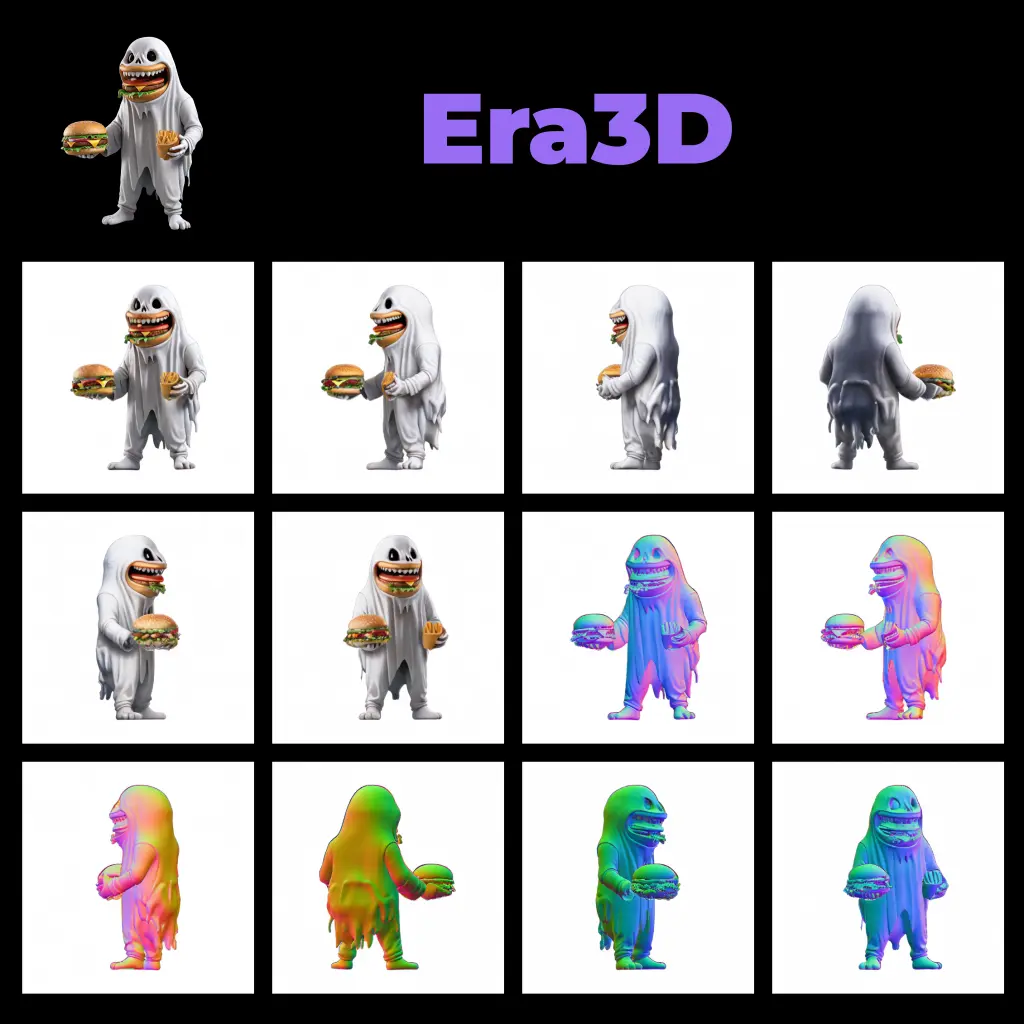ComfyUI Node: Checkpoint selector
LF_CheckpointSelector
Category✨ LF Nodes/Configuration
lucafoscili (Account age: 2319days) Extension
LF Nodes Latest Updated
2025-02-21 Github Stars
0.05K
How to Install LF Nodes
Install this extension via the ComfyUI Manager by searching for LF Nodes- 1. Click the Manager button in the main menu
- 2. Select Custom Nodes Manager button
- 3. Enter LF Nodes in the search bar
Visit ComfyUI Online for ready-to-use ComfyUI environment
- Free trial available
- 16GB VRAM to 80GB VRAM GPU machines
- 400+ preloaded models/nodes
- Freedom to upload custom models/nodes
- 200+ ready-to-run workflows
- 100% private workspace with up to 200GB storage
- Dedicated Support
Checkpoint selector Description
Efficiently select and manage AI art generation checkpoints with streamlined workflow and user-friendly interface.
Checkpoint selector:
The LF_CheckpointSelector node is designed to streamline the process of selecting and managing checkpoints within your AI art generation workflow. This node allows you to efficiently choose from a list of available checkpoints, which are pre-trained models used to generate or enhance images. By providing a user-friendly interface for checkpoint selection, it simplifies the workflow and ensures that you can quickly switch between different models to experiment with various styles and techniques. The node also includes features for filtering and randomizing checkpoints, making it easier to explore a wide range of artistic possibilities. Additionally, it handles the retrieval of associated metadata, such as checkpoint hashes and images, to provide a comprehensive overview of each model's characteristics.
Checkpoint selector Input Parameters:
checkpoint
This parameter allows you to specify the name of the checkpoint (model) you wish to load. It is essential for determining which pre-trained model will be used in your workflow. The available options are derived from the list of checkpoints in your system. If a filter is applied, only checkpoints matching the filter criteria will be displayed. This parameter impacts the style and quality of the generated images, as different checkpoints are trained on various datasets and have unique characteristics.
filter
The filter parameter enables you to narrow down the list of available checkpoints based on specific criteria. By providing a string, you can filter checkpoints that contain the specified substring in their names. This is useful for quickly finding models that match certain themes or characteristics, making it easier to manage a large collection of checkpoints.
randomize
When set to True, this parameter randomizes the selection of checkpoints. This can be particularly useful for exploring different models without manually selecting each one. It adds an element of surprise and experimentation to your workflow, allowing you to discover new styles and techniques.
seed
The seed parameter is used in conjunction with the randomize option to ensure reproducibility. By providing a specific seed value, you can guarantee that the same checkpoint will be selected each time the node is executed with the same seed. This is useful for creating consistent results across different runs.
Checkpoint selector Output Parameters:
checkpoint_path
This output parameter provides the full path to the selected checkpoint file. It is crucial for loading the model into your workflow and ensuring that the correct file is used for image generation.
checkpoint_hash
The checkpoint_hash output gives the SHA-256 hash of the selected checkpoint file. This hash is useful for verifying the integrity of the checkpoint and ensuring that the correct model is being used. It can also be used for tracking and documentation purposes.
checkpoint_name
This output parameter returns the name of the selected checkpoint file. It is useful for display purposes and for keeping track of which model is currently in use.
checkpoint_image_path
If an associated image is found for the selected checkpoint, this output parameter provides the path to that image. This can be useful for visually identifying the checkpoint and understanding its characteristics.
checkpoint_base64
This output provides the base64-encoded representation of the checkpoint image, if available. It can be used for embedding the image in web interfaces or other applications where a visual representation of the checkpoint is needed.
checkpoint_tensor
The checkpoint_tensor output gives the tensor representation of the checkpoint image, if available. This can be useful for further processing or analysis within your workflow.
Checkpoint selector Usage Tips:
- Use the filter parameter to quickly find checkpoints that match specific themes or characteristics, making it easier to manage a large collection of models.
- Enable the randomize option to explore different models and discover new styles without manually selecting each checkpoint.
- Utilize the seed parameter to ensure reproducibility when using the randomize option, allowing you to create consistent results across different runs.
- Take advantage of the checkpoint_image_path and checkpoint_base64 outputs to visually identify and understand the characteristics of the selected checkpoint.
Checkpoint selector Common Errors and Solutions:
Error calculating hash for checkpoint
- Explanation: This error occurs when the node is unable to compute the SHA-256 hash for the selected checkpoint file, possibly due to file corruption or access issues.
- Solution: Verify that the checkpoint file is not corrupted and that the file path is correct. Ensure that the file has the necessary read permissions.
No image found for the checkpoint
- Explanation: This error indicates that the node could not find an associated image for the selected checkpoint.
- Solution: Ensure that the checkpoint directory contains images associated with the checkpoints. If images are not available, consider adding them to enhance the visual identification of checkpoints.
Checkpoint file not found
- Explanation: This error occurs when the specified checkpoint file does not exist in the expected directory.
- Solution: Verify that the checkpoint file name is correct and that it exists in the specified directory. Check for any typos or incorrect paths in the input parameters.
Checkpoint selector Related Nodes
RunComfy is the premier ComfyUI platform, offering ComfyUI online environment and services, along with ComfyUI workflows featuring stunning visuals. RunComfy also provides AI Playground, enabling artists to harness the latest AI tools to create incredible art.



